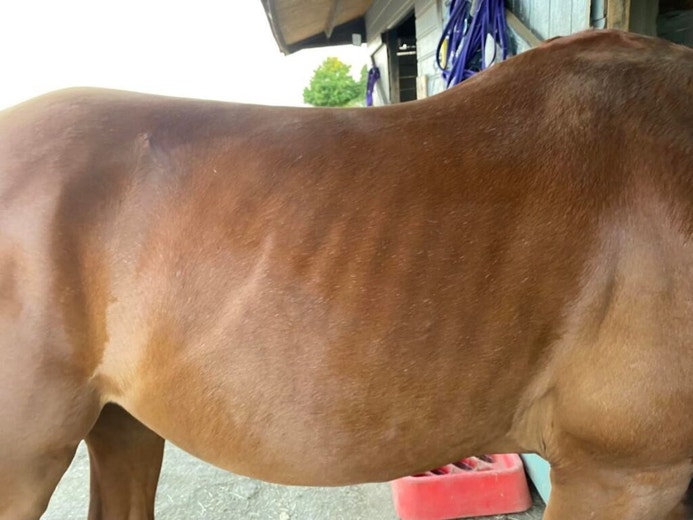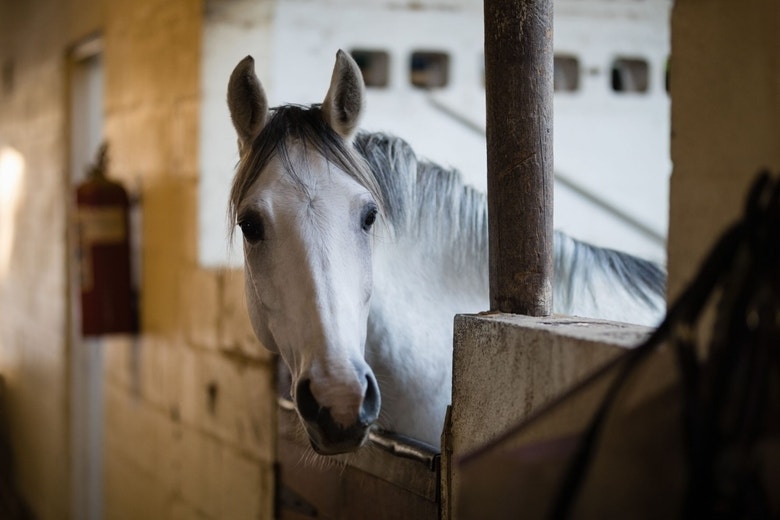#SPILLERSScience: turnout does not always reduce the risk of gastric ulcers
While the risk of gastric ulcers generally seems lower in horses at pasture, recent research in Iceland, carried out by Nanna Luthersson in collaboration with SPILLERS, the University of Glasgow and the University of Bristol, highlights this may not always be the case. In fact, stabling with suitable forage may even reduce the risk in some situations…
Why Iceland?
Most of the research investigating the prevalence of gastric ulcers has been carried out in ‘managed’ horses. In Iceland, horses typically live out at pasture, often in large herds and if stabled, are generally fed a high forage, low starch and low sugar diet. While Icelandic horses do get gastric ulcers, it’s been suggested that the over-all incidence is low.

What did we do?
The aim of this study was to investigate the incidence of gastric ulcers in Icelandic horses moving from pasture into training.
All horses were scoped within two weeks of being removed from pasture and prior to starting training. They were then scoped again after approximately 8 weeks of being stabled and doing light work.
Prior to the study, all horses were had lived out in large herds for their entire adult lives (age range 3-7 years), had never been in work and were fed supplementary forage in winter months only.
Most horses (57/71) were fed forage only during the training period, but 11 were given very small amounts of soaked sugar beet and 3 were given a small amount of commercially produced feed. Starch and sugar intake from ‘bucket feed’ in all horses was low - no more than 0.5g per kilogram of bodyweight per day (equivalent to no more than 250g for a 500kg horse).
All the horses in the study were independently owned and although veterinary treatment was offered for all horses if clinically appropriate, it was only accepted for one horse. This horse was later removed from the study and is not included in the results.
What did we find?
- Approximately 72% of horses had non-glandular ulcers (grade 2 or above) at scope 1
-Approximately 25% of horses had non-glandular ulcers (grade 2 or above) at scope 2 – yes that’s right, the prevalence and severity of ulcers improved after being stabled for 8 weeks!
-Horses given forage three times per day as opposed to twice per day were more almost 18 times more likely to improve!
-Over-all, the incidence of glandular ulcers decreased from 47% to approximately 41% although it was not possible to identify a reason for this.
| Incidence of non-glandular ulcers at scope 1 (%) | Incidence of non-glandular ulcers at scope 2 (%) | |
| No ulcers present | 14 | 54 |
| Grade 1 | 15 | 21 |
| Grade 2 | 26 | 14 |
| Grade 3 | 40 | 11 |
| Grade 4 | 6 | 0 |
What does this mean?
The high prevalence and severity of non-glandular ulcers at the start of the study, and the subsequent improvement following the training period was unexpected. We are already looking into the reasons for this so watch this space for more information!
If otherwise appropriate, increasing the amount of time your horse is turned out may still help to reduce the risk of gastric ulcers, as well as offering other health and welfare benefits. However, the results of this study highlight the importance of regular forage provision, as well as being a good reminder that 24/7 turnout does not automatically mean reduced risk.

For more advice on feeding horses prone to gastric ulcers contact the SPILLERS Care-Line
Reference
Luthersson N, Ýr Þorgrímsdóttir Ú, Harris PA, Parkins T, Bennet ED. Effect of moving from being extensively managed out in pasture into training on the incidence of equine gastric ulcer syndrome in Icelandic horses. J Am Vet Med Assoc. 2022 Sep 28;260(S3):S102-S110. doi: 10.2460/javma.22.06.0263. PMID: 36149938.





